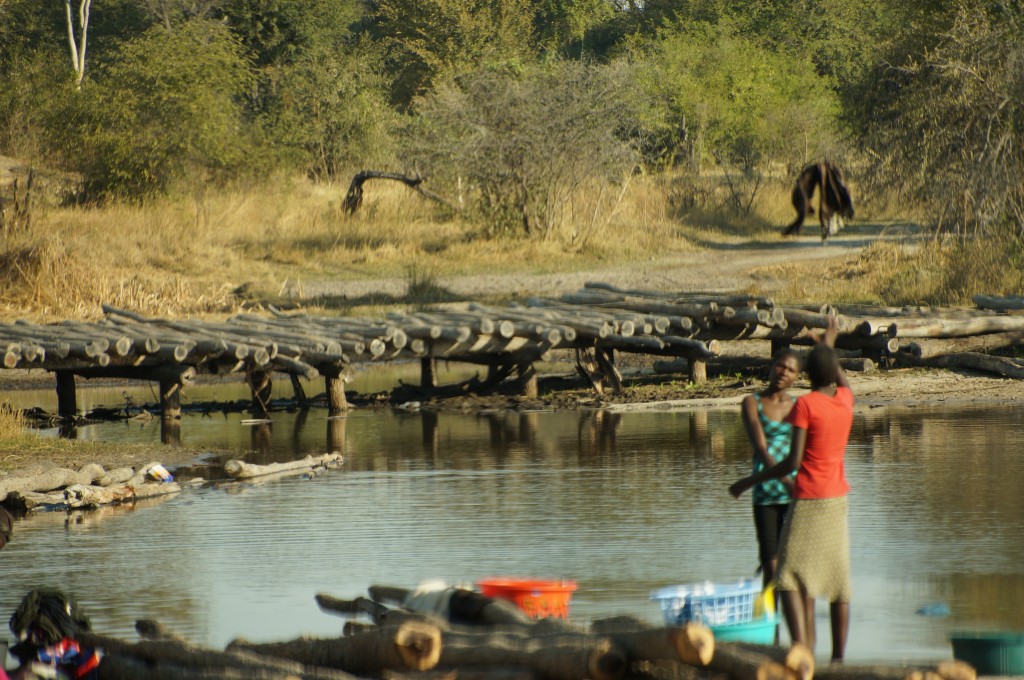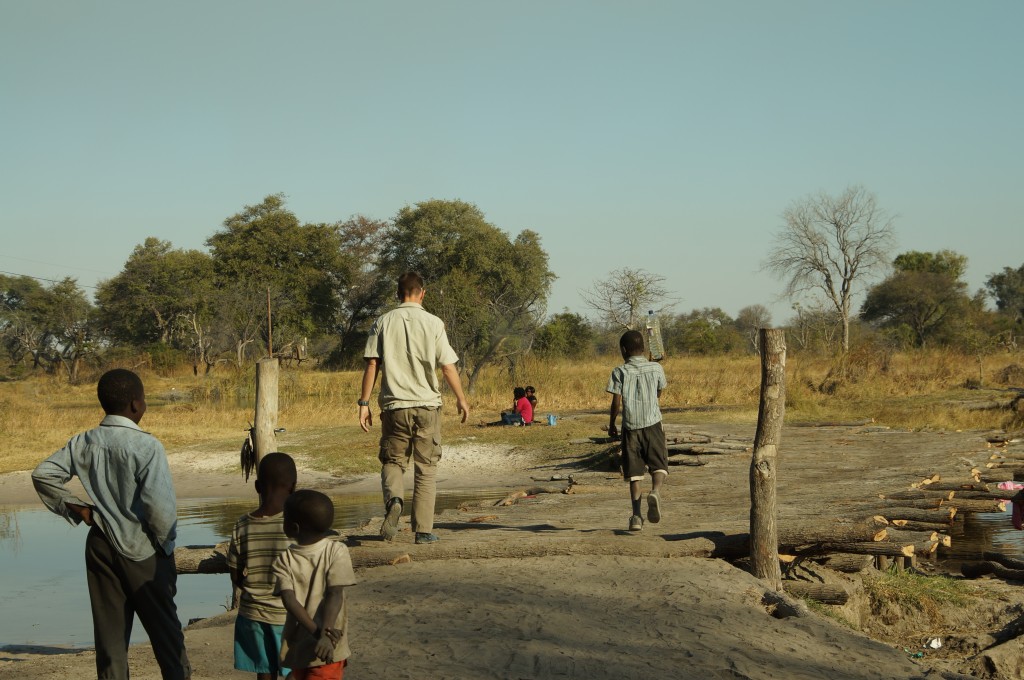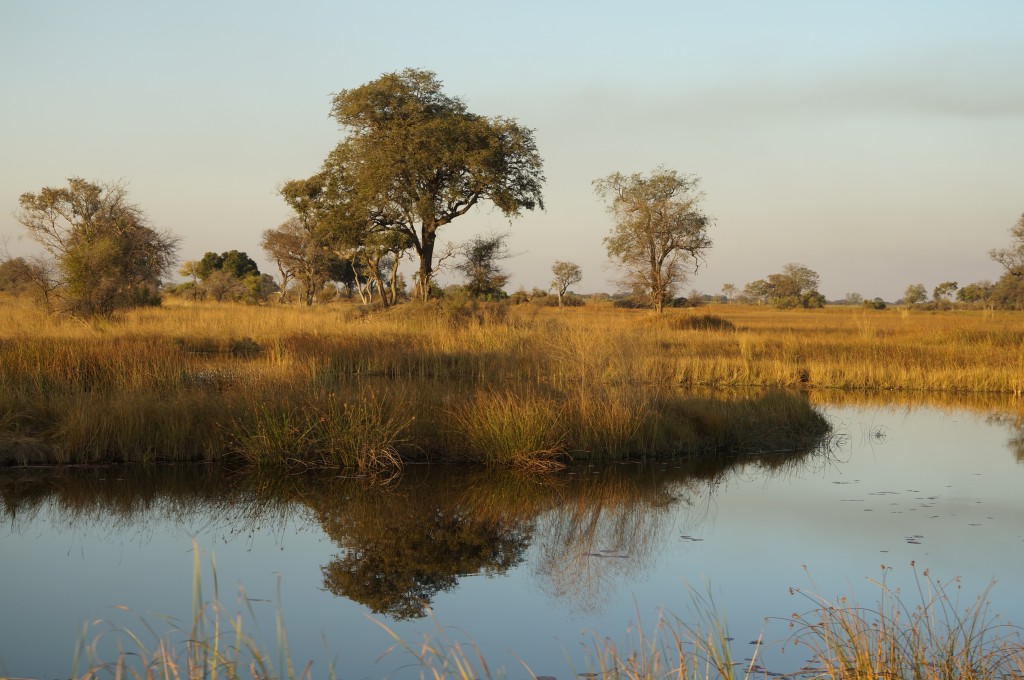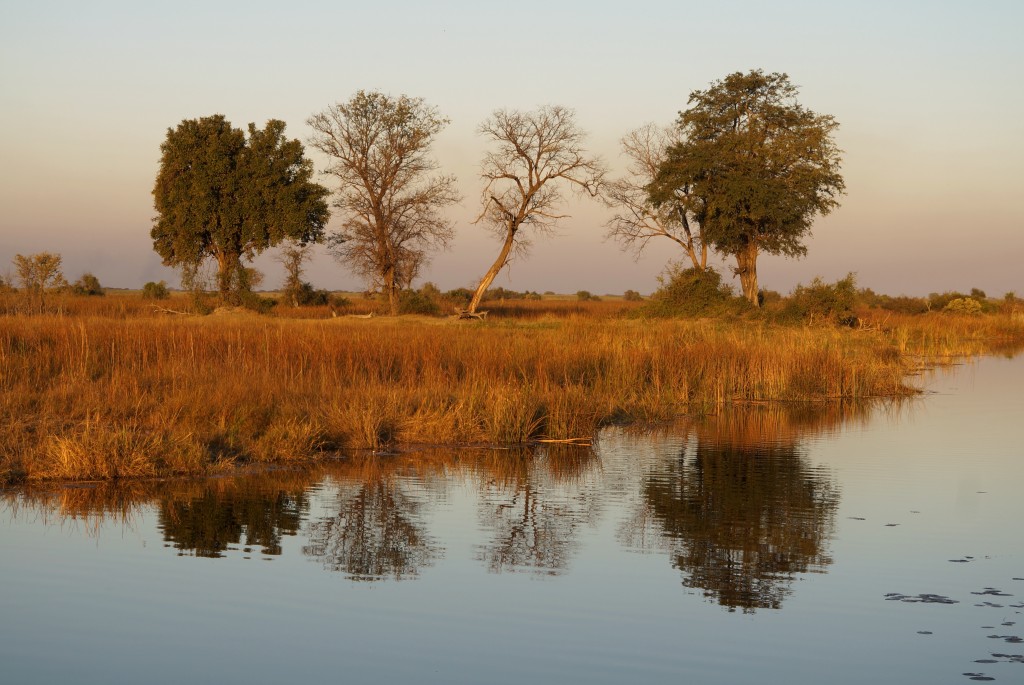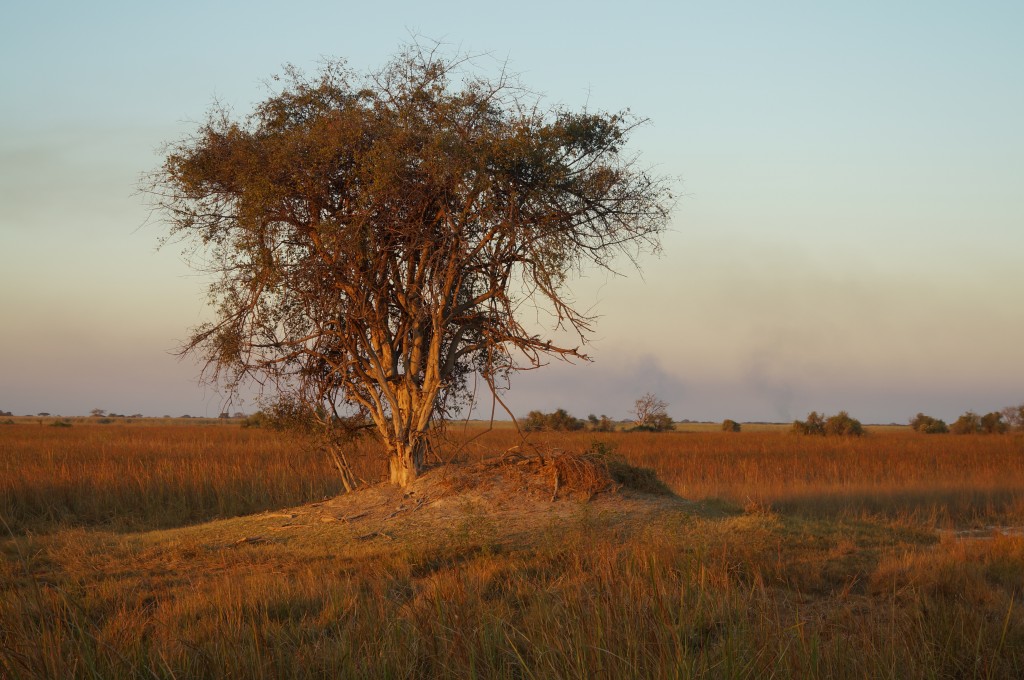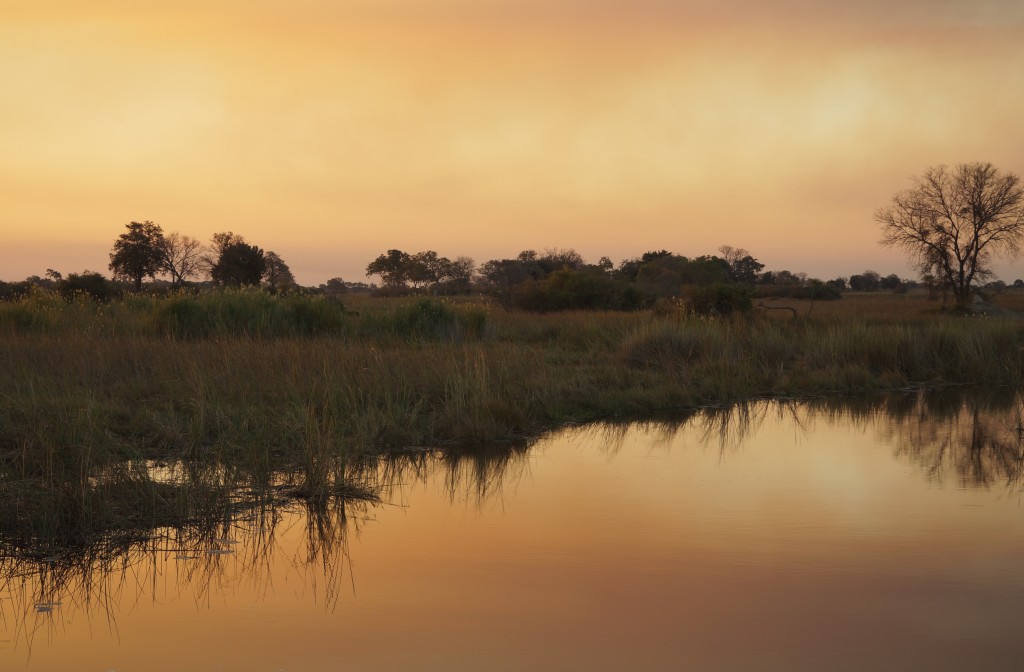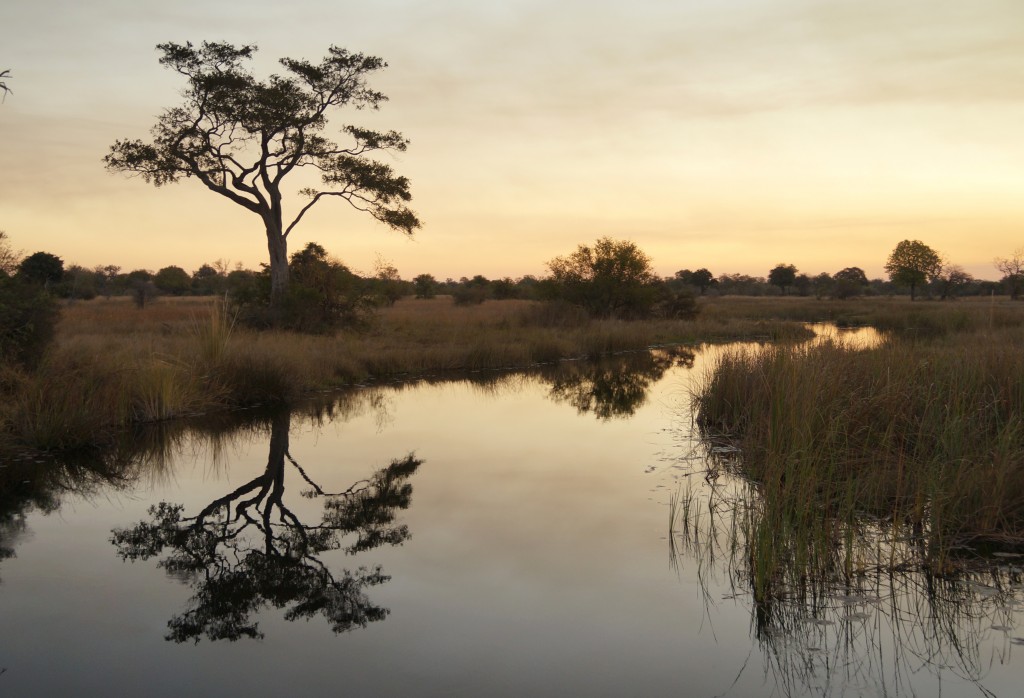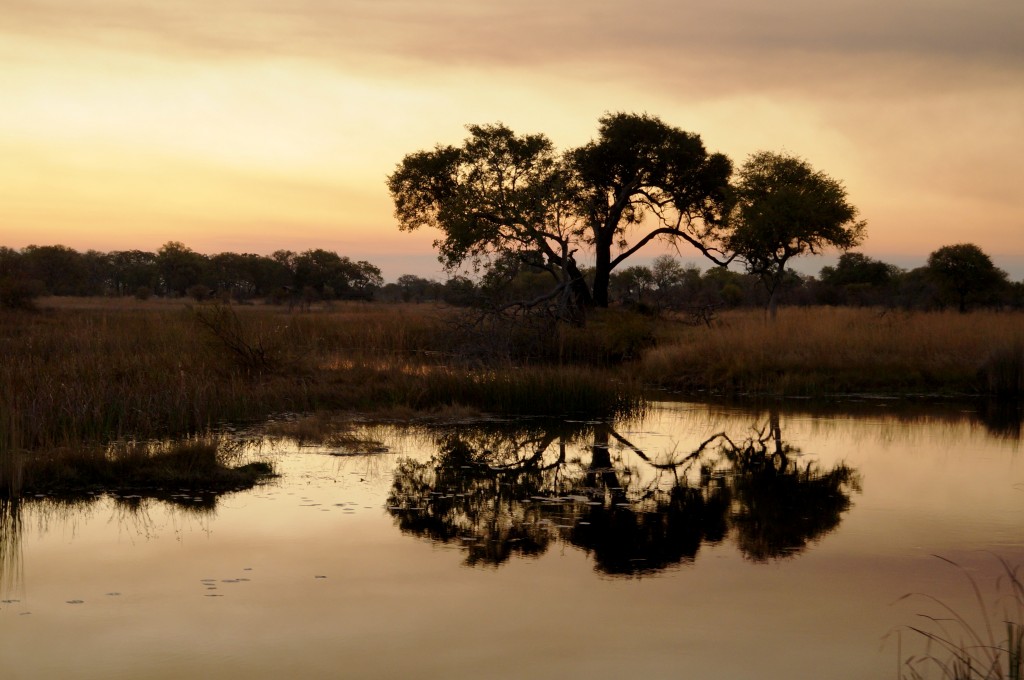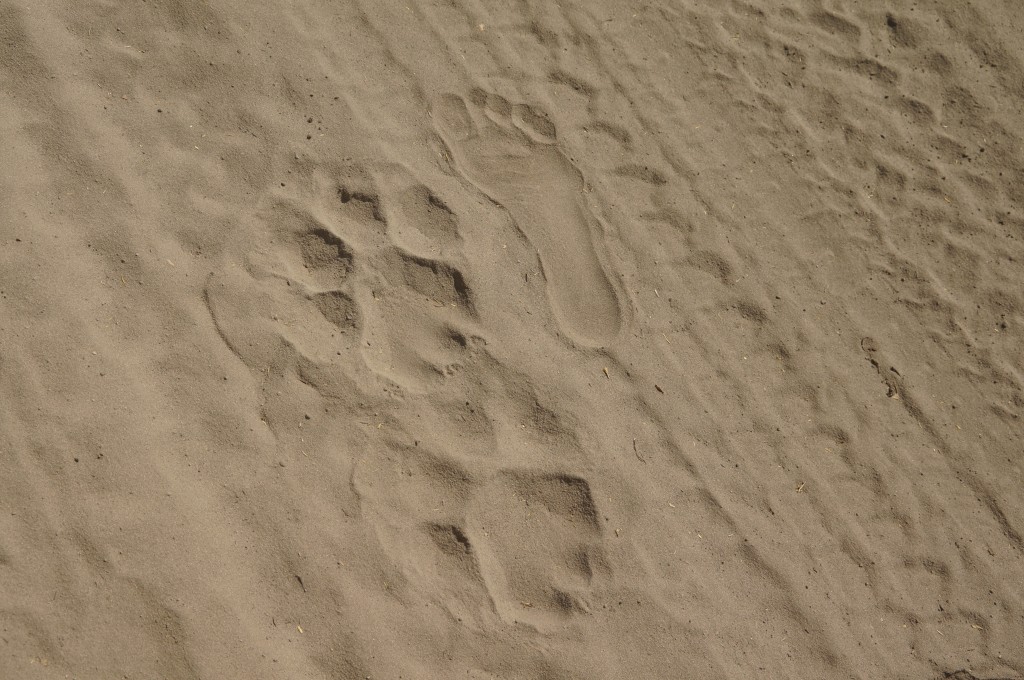There’s this cool new tent lodge “in the middle of nowhere” up in the Caprivi. So named because it sits just along the edge of the national park of the same name (formerly known as Mamili), this cluster of luxury raised tents sits in the middle of the Kwando-Linyanti river system, a labyrinth of narrow channels winding through low grassy fields and reeds. It’s wild country – a birder’s paradise where the likelihood of running into a much larger animal means you’ll get a “what to do if you encounter an elephant” briefing shortly after arrival.
The lodge is the outcome of the cooperative efforts of a handful of adventurous entrepreneurs and the Wupalo Conservancy, with the support and advice of a number of organizations, including the Millennium Challenge Account – Namibia, the World Wildlife Federation, and others. They employ a talented staff from the local area that will make you feel welcome on arrival, brief you on the local wildlife and culture, serve you a sumptuous meal rivaling the best restaurants in Namibia, and even provide Namibian singing and dancing after dinner.
Dedicated to making a minimal footprint in the wilderness area, virtually everything is solar-powered. There are no fences, which means that you are issued a radio and a flashlight prior to dusk, and wandering around on your own is strongly discouraged. Because the elephants and hippos will wander right through the camp. Hearing a lion roaring nearby at night is not uncommon. This is Africa.
Getting there is a bit challenging but far from impossible. From Kongola, you follow the C49, which is a packed earth road but in the process of being upgraded, for 70 kilometers. Turn right at the sign, and then you can either park at the (secure) conservancy headquarters in the village and get picked up, or if you have a 4×4, drive the remaining 11 km to the camp. The main challenge is at the beginning, but we managed in a fairly citified 4×4:
We were told we could either go through the river (2 feet deep at one point), or take the bridge. “Keep moving in a low gear, and ignore the sounds you hear coming from beneath the car.” We chose the bridge.
Once we got to the camp, proprietor Simone Micheletti insisted we take an abbreviated boat ride, despite technically having arrived too late for the day’s activities. “To see what we may see.” He has an encyclopedic knowledge of the local birds and wildlife, and identified the most obscure species before most of us managed to even spot them. As the sun set, I tried my best to capture the feel of the local scenery, with the calm water reflecting a wide variety of trees, all made more dramatic by the light smoke in the air from a distant brush fire.
You can see some photos of the animals you can see (and we saw) on the lodge’s Facebook page or website. We’ll just offer this photo of the tracks that covered the road for a good 5-6 kilometers of the dirt road on our way out of the area:

